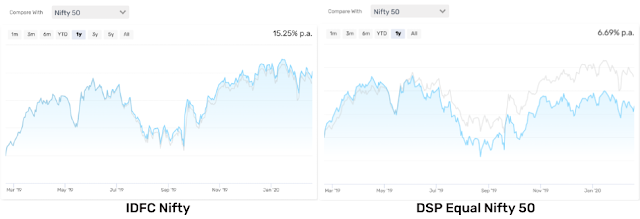There are two ways to invest money:
(a) simply investing whatever is left in your bank account after all the expenses have been taken care of, and
(b) investing with a goal of accumulating a specific amount by a specific date.
There’s a name for (b): it’s called Goal-Based Investing. Goal-based investing seems like more work in the beginning, but if you look at the big picture, it’s actually less work than investing without specific goals in mind.
Plans give us clarity
There’s a saying, “Plans are of little importance, but planning is essential.” The specifics of our plans change over time, and some plans simply become irrelevant. But having a plan gives us the confidence we would never get otherwise.
When we plan, we know in advance how much money we’re roughly going to need, and where that money will come from. Either we’ll know that our investments will give us what we need, and we can sleep peacefully. Or, we’ll know by how much we’ll fall short. This isn’t ideal, but it’s arguably better than falling short and not knowing it.
Asset classes
Financial assets can be divided into 2 categories: volatile and non-volatile. Value of volatile assets fluctuate badly making it hard for anyone to guess what the value of the asset would be on a certain date. Example: shares, gold, oil, etc. Non-volatile assets either retain their value or they almost always move in one direction – upwards. Example: cash in your locker, bank deposits, bonds, etc.
While volatility is annoying, volatile assets are the ones that can retain the money’s purchasing power over time. If you want your money to retain its purchasing power, investing them in something like equity is pretty much the only option you have. If you don’t have sufficient amount of volatile assets, your investment simply keeps losing its purchasing power, like a leaky bucket. If you hold too much of volatile assets, the price you get when you sell will be unpredictable, and that can very well be less than what you really need.
Asset allocation
Goals can help you decide on your desired asset allocation, meaning how much to invest in volatile assets and how much in non-volatile assets. Buying volatile assets such as equity or gold is fairly easy. But you need an exit plan for selling them if you want to avoid excessive capital loss. The exit plan usually is to gradually reduce your exposure to volatile assets until you bring it down to 0.
For a goal that’s 15 years away, I might start with investing 80% in equity and 20% in low volatility fixed income. For a goal that’s 8 years away, I’d probably start with 30 or 40% equity exposure. In both cases, I’d reduce equity exposure gradually over time. By the time I’m spending the money on whatever financial goal I had, my equity exposure would be zero, meaning almost zero volatility.
A framework for decision making
Mostly as a benefit of having a desired asset allocation, goal planning gives us a framework for investment decision making.
Equity investing can be confusing and stressful. If equity valuations suddenly fall, should you buy more equity or not? For how much should you buy equity during the fall? How long will you have to wait before you can see profits from this purchase? It’s not easy for anyone to answer these questions. Same confusion exists on the other side too: if there’s a stock market rally, should you sell some equity? When to sell and how much to sell? Nothing here is obvious or intuitive.
If you have a desired asset allocation that’s optimised for a specific goal date, your asset allocation will give you answers to every such question. Your desired exposure to equity is 40%; there’s a stock market rally, and now your equity is 46% of your portfolio. You sell 6% equity and invest that money in fixed income assets. There’s a stock market crash and your equity portfolio is worth only 32% of your entire portfolio. Sell 8% of fixed income and buy equity (at a lower price).
Stock market almost constantly feeds us fear and greed. In this dark alley, your asset allocation lights the path and gets you through safely. You just have to start with a reasonable plan and stick to it even when the going gets tough.











